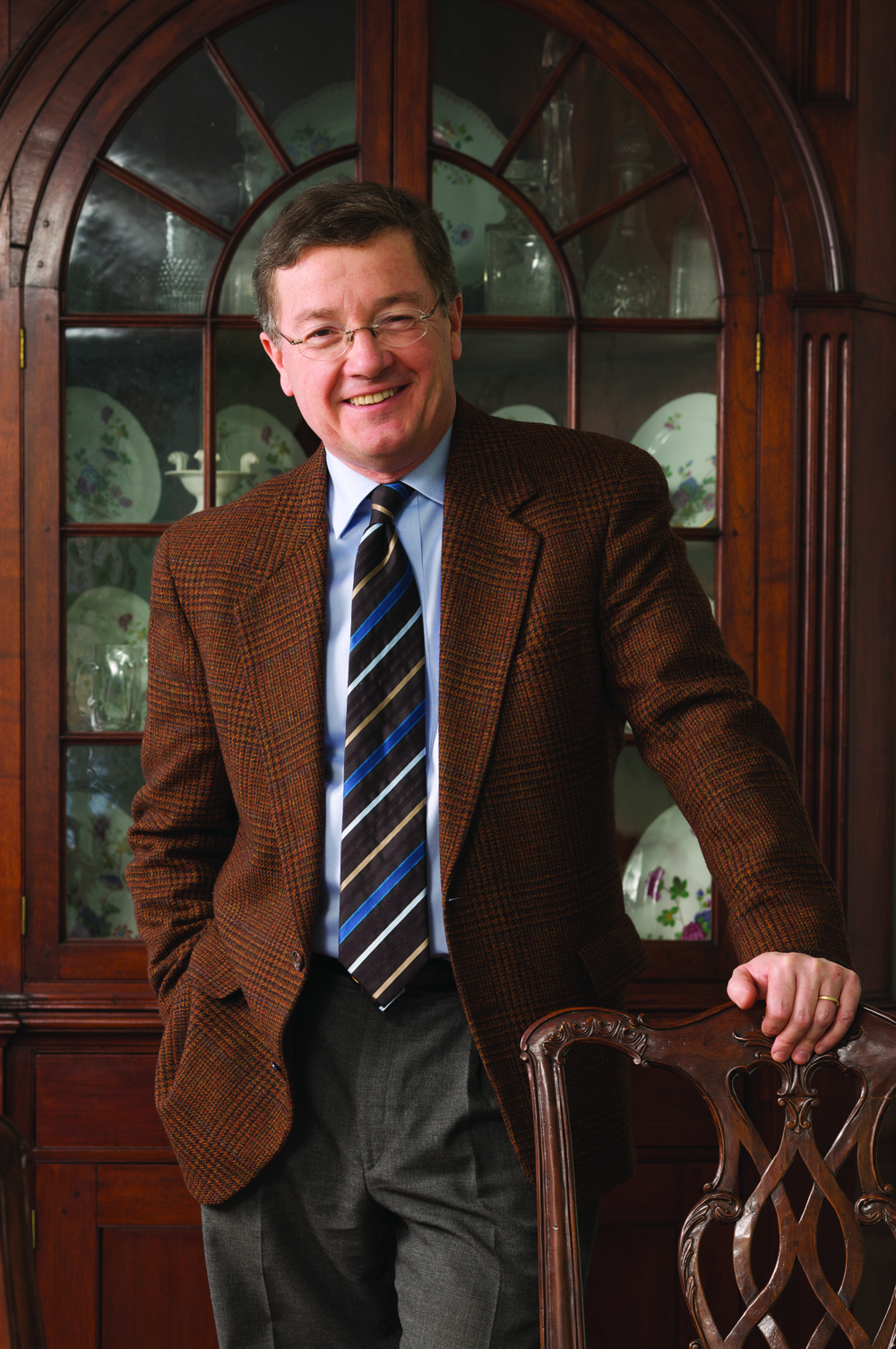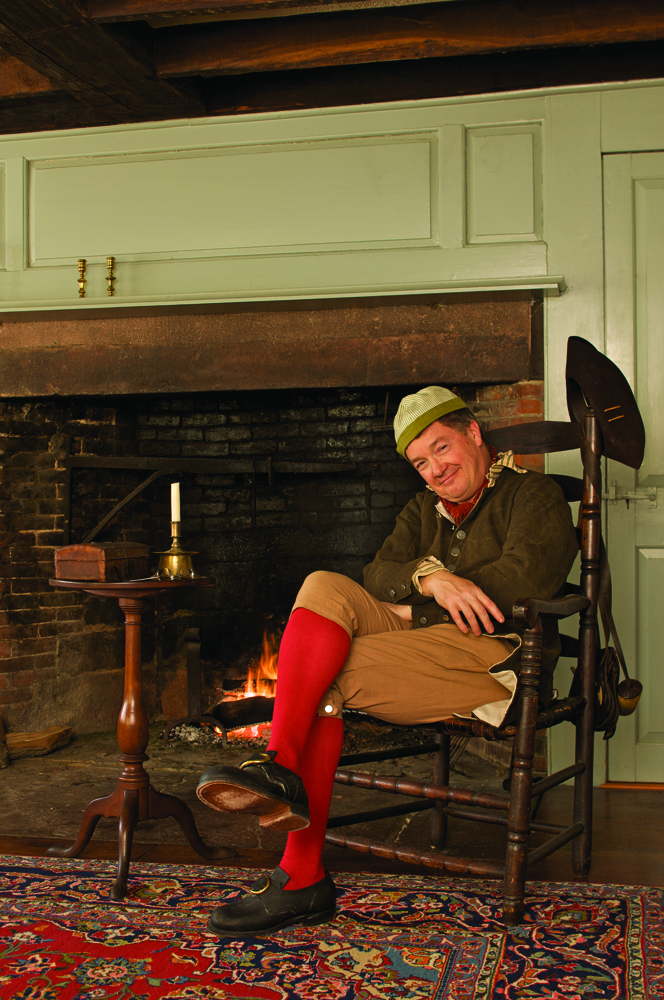
“Although I have lived elsewhere,” Philip Zea says, “it looks like I’m contained by the Connecticut Valley.” More specifically, by the remarkable microcosm of Deerfield, Massachusetts, where he has served the unique living museum Historic Deerfield in one capacity or another, most recently as president, for more than twenty-three years.
Sense of place, Zea says, is central to his interest in our cultural history, and Historic Deerfield’s greatest strength. In a transient society like ours, he observes, most people are too little aware of their surroundings. By placing people within the context of their landscape, we begin to understand how each comes to affect the other. Context is not only the crux of cultural history, it also helps us make more intelligent decisions going forward. And context, of course, is Historic Deerfield’s forte. The town’s landscape is astonishingly well preserved. The plan laid out by the seventeenth-century English pioneers who settled this lush spot along the Connecticut River survives intact, and although Deerfield’s houses date from different periods, Federal as well as colonial, their frame remains the original forty-three house lots the founders inscribed along Main Street. Perhaps even more remarkable, lush meadows and farms still extend right to the town center. Enhanced by the museum’s extraordinary collection of period furniture, ceramics, silver, and fabrics, and the documentation developed by half a century of scholarly research, the sense of place here is palpable.
Zea could not feel other than at home in Deerfield. Raised just seventy miles upriver in Meriden, New Hampshire, he went at age eighteen to study history at Wesleyan University in the town that had been the river’s principal colonial-era port-Middletown, Connecticut. He first arrived at Historic Deerfield as a summer fellow following his junior year at Wesleyan. He returned as assistant curator in 1981, after graduating from the University of Delaware’s prestigious Winterthur Program in American Material Culture. Aside from a four-year absence, which he spent as curator of furniture at Colonial Williamsburg and as vice-president for museums and collections at the Society for the Preservation of New England Antiquities (now Historic New England), he has been resident in Deerfield ever since.
Zea’s special interest in furniture is a legacy, he says. His father is a highly skilled cabinetmaker, and it was from him that Zea gained an appreciation of antique furniture and learned how it was made.
“There’s an equation there,” he explains. “It has to do with the maker, the guy who harnesses the technology but also has business relationships with other people who provide other finished products and skills that the [cabinetmaker] then factors into an acceptable product for patrons.” A mahogany chest of drawers purchased by an early eighteenth-century Deerfield minister or merchant, for example, records in its West Indian timber and the gloss of varnish brought from Africa the cosmopolitan connections of this seemingly remote, frontier community.

Despite his scholarly credentials and buttoned-down Yankee manner, Zea is remarkably free of self-importance. As a freshly minted B.A. he did a stint as a costumed interpreter at nearby Old Sturbridge Village and even now will not refuse a request to pose in eighteenth-century artisan’s garb, as if making a delivery to one of Deerfield’s historic houses. He has an aversion to ivory towers. If that is where you stay, he insists, as a curator you are a failure. You need to connect with the public and—this is close to his heart—curators need to be “institutional shoppers.” Zea has been fascinated by what he calls “the hunt” since childhood. He made his first significant acquisition at age twelve when he found a late seventeenth-century document box in a local rummage sale in New Hampshire. He recognized the initials on the box as those of a local family.
Zea continues to frequent auctions and sales as often as he can, and he brought the Antiques Dealers’ Association of America’s fall show back to Deerfield in 2003. It has since earned a reputation as the best antiques show in New England. The presence of the show also builds synergy. Dealers and collectors use the museum’s collections as a reference tool. Zea’s services in this area played a major part in the ADA’s decision to honor him this month at the Philadelphia Antiques Show with its 2009 Award of Merit, which it grants annually to “a distinguished leader in the antiques industry.”
But if the efforts of Zea and Historic Deerfield help the antiques business, they also create opportunities for the museum. There is a neoclassical stand, for example, “in superb condition” that the acquisitions committee purchased at the 2008 show. Inside a drawer was penciled “Noah Wells, Shelburne, Massachusetts” and a date June 28, 1834, with this note: “Start for Attica NY on Tuesday next the first of July.” Anyone in Deerfield knows that Shelburne is the next town to the northwest. It was Historic Deerfield librarian David Bosse who recognized Attica as the New York community that was home to Mary P. Wells Smith, author of the 1902 historical novel The Boy Captive of Old Deerfield, a book that did much to create broader awareness of Deerfield’s place in American history. A genealogical check revealed that Noah was Mary’s father. Another bit of context, another connection, and an ever stronger sense of place for Historic Deerfield and Philip Zea.
